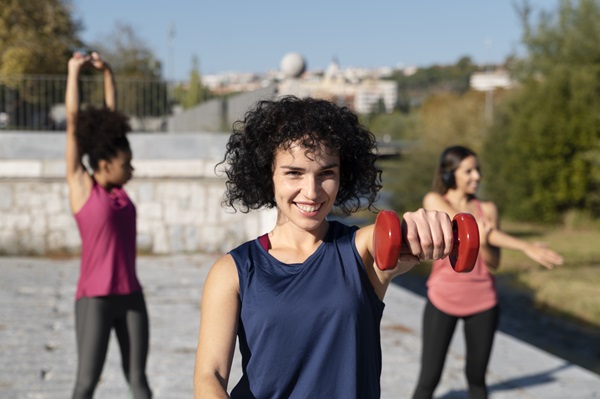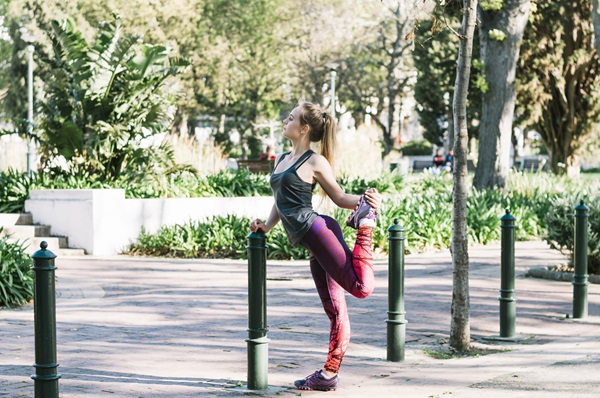Daily physical activity is key to boosting your energy and enhancing your well-being. Incorporating regular exercise into your routine helps improve overall health, increase vitality, and support a balanced lifestyle.

I. Introduction
a. The Sedentary Lifestyle Epidemic
In an era dominated by technology and convenience, the prevalence of sedentary lifestyles has surged. Many of us spend the majority of our days sitting at desks, behind the wheel, or in front of screens, contributing to a growing public health concern. The consequences of this sedentary epidemic are dire, from increased rates of obesity to a decline in overall well-being.
b. The Importance of Physical Activity
The solution to this modern-day dilemma lies in a simple yet profound act—incorporating physical activity into our daily routines. Daily Physical activity is the cornerstone of a healthy lifestyle, offering a plethora of benefits to our physical and mental well-being. In this article, we’ll delve into the remarkable advantages of regular exercise and explore how to make it an integral part of your daily life.
II. Benefits of Daily Physical Activity
a. Physical Health
Weight Management
One of the most tangible benefits of daily physical activity is weight management. Engaging in exercise helps you burn calories, maintain a healthy weight, and reduce the risk of obesity-related conditions such as type 2 diabetes.
Cardiovascular Health
Exercise elevates your heart rate and strengthens your cardiovascular system. This, in turn, lowers the risk of heart disease, hypertension, and stroke.
Muscle and Bone Strength
Daily physical activity enhances muscle strength and bone density, reducing the risk of fractures and osteoporosis, especially as we age.
b. Mental Health
Stress Reduction
Daily physical activity is a natural stress buster. It stimulates the production of endorphins, those delightful “feel-good” hormones, which can reduce stress and anxiety levels.
Mood Enhancement
Exercise is a mood enhancer, helping combat feelings of depression and boosting self-esteem.
Cognitive Function
Daily Physical activity enhances cognitive function, improving memory, concentration, and problem-solving abilities.
III. Finding Your Motivation
a. Setting Clear Goals To incorporate
daily physical activity into your routine set clear, achievable goals. Whether it’s losing weight, running a marathon, or simply feeling better, defining your objectives will keep you motivated.
b. Personal Interests
Discover physical activities that genuinely interest you. Whether it’s dancing, hiking, or yoga, choosing activities you enjoy ensures you stay committed.
c. Creating Accountability
Share your fitness journey with a friend or join a fitness group to create accountability. The presence of others can be a powerful motivator.
IV. Understanding Your Current Fitness Level
a. Self-Assessment
Conduct a self-assessment to understand your current fitness level. This will help you choose suitable activities and set realistic goals.
b. Professional Evaluation
For a comprehensive assessment, consider consulting a fitness professional who can provide insights into your strengths and weaknesses.
V. Types of Physical Activities
a. Aerobic Exercises
Aerobic exercises like walking, jogging, or swimming are excellent for improving cardiovascular health.
b. Strength Training
Strength training with weights or resistance bands builds muscle and burns calories.
c. Flexibility and Balance
Activities Activities like yoga or Pilates enhance flexibility and balance, reducing the risk of injury.
d. Sports and Recreational
Activities Engaging in sports like tennis, basketball, or even recreational activities like gardening, can make exercise enjoyable.
VI. Designing Your Daily Physical Activity Plan
a. Management
Set aside dedicated time for daily physical activity. Block it on your schedule, just like any other appointment.
b. Balancing Cardio and Strength
Training A balanced routine includes both cardio and strength training exercises. Aim for at least 150 minutes of moderate aerobic activity or 75 minutes of vigorous aerobic activity per week.
c. Variation and Progression
Keep your routine exciting by incorporating different activities and gradually increasing the intensity and duration.
VII. Overcoming Common Barriers
a. Time Constraints
Prioritize your health and make time for exercise, even in a busy schedule. Short, intense workouts can be highly effective.
b. Lack of Motivation
If motivation wanes, remind yourself of your goals, and seek support from friends or professionals.
c. Physical Limitations
Adapt your routine to accommodate physical limitations, seeking advice from a healthcare professional if necessary.
d. Weather and Environmental
Factors Plan for indoor or outdoor activities, depending on the weather. Having a backup plan prevents weather-related excuses.
VIII. Making Exercise Enjoyable
a. Music and Entertainment
Create an engaging atmosphere by listening to music, podcasts, or audiobooks during your workouts.
b. Social Engagement
Exercise with friends or join group classes for a social and motivational boost.
c. Exploring New Environments
Change your workout scenery by exploring parks, trails, or even a different room in your home

IX. Integrating Physical Activity at Work
a. Desk Exercises
Incorporate daily physical activity like desk exercises into your workday. Simple stretches, leg lifts, and seated squats can help combat the sedentary nature of office work.
b. Active Commuting
Opt for active commuting methods like walking or biking to work when possible. It’s an excellent way to build daily physical activity into your routine.
c. Office Wellness Programs
Many workplaces offer wellness programs and fitness facilities. Take advantage of these resources to make exercise a part of your work life.
X. Home-Based Workouts
a. Equipment Essentials
Equip your home with basic workout gear, such as resistance bands, dumbbells, or a yoga mat. These tools enable effective home workouts.
b. Structured Workout
Programs Follow structured workout programs, like online fitness videos or apps, which provide guidance and motivation.
XI. Taking Advantage of Technology
a. Fitness Apps and Wearables
Utilize fitness apps and wearables to track your progress, set goals, and receive reminders for daily physical activity.
b. Online Workouts and Communities
Engage with online fitness communities and streaming services that offer a wide range of exercise classes and resources.
XII. The Role of Proper Nutrition
a. Pre-Workout Fuel
Consume a light, balanced meal or snack before exercising to provide your body with the necessary energy.
b. Post-Workout Recovery
Replenish your body with a post-workout snack that includes protein and carbohydrates to aid in muscle recovery.
XIII. Staying Hydrated
a. Importance of Hydration
Stay well-hydrated during exercise to maintain performance and support overall health.
b. Fluid Guidelines
Follow recommended fluid guidelines for your activity level, climate, and individual needs.
XIV. Recovery and Rest
a. Importance of Rest Days
Incorporate rest days into your routine to prevent overtraining and reduce the risk of injury.
b. Sleep and Exercise
Ensure you get enough quality sleep to support your body’s recovery and overall health.
XV. Monitoring Your Progress
a. Tracking Your
Achievements Record your accomplishments, such as increased endurance or weight loss, to stay motivated.
b. Adjusting Your Routine
Periodically assess and adjust your routine to challenge your body and continue making progress.
XVI. Staying Safe During Physical Activity
a. Injury Prevention
Prioritize safety by using proper equipment and techniques to reduce the risk of injury.
b. Appropriate Warm-Up and Cool-Down
Always warm up before exercise to prepare your body and cool down afterward to aid recovery.

XVII. Consulting with Healthcare Professionals
a. When to Seek Medical Advice
Consult a healthcare professional if you have underlying health conditions or concerns about starting a new exercise program.
b. Tailoring Exercise to Medical Conditions
If you have specific medical conditions, seek guidance on tailoring your exercise routine to your health needs.
XVIII. Encouraging Physical Activity in Children and Family
a. Leading by Example
Set a positive example for your family by demonstrating the importance of physical activity.
b. Family-Friendly Activities
Engage in activities that the entire family can enjoy, such as hiking, biking, or playing sports together.
XIX. Staying Consistent
a. Building Habits
Consistency is key to success. Establish exercise as a daily habit to make it a natural part of your routine.
b. Handling Setbacks
If you miss a day or face challenges, don’t be discouraged. Recognize setbacks as part of the process and continue.
XX. Seeking Support and Motivation
a. Joining Fitness Groups
Participate in fitness groups or classes, where the support and camaraderie can be highly motivating.
b. Hiring a Personal Trainer
Consider hiring a personal trainer who can provide tailored guidance and accountability.
c. Virtual Support
Connect with virtual fitness communities for advice, encouragement, and motivation.
XXI. Environmental Considerations
a. Eco-Friendly Activities
Choose eco-friendly activities such as hiking, cycling, or kayaking to benefit both your health and the planet.
b. Sustainable Gear
Opt for sustainable and environmentally friendly workout gear and clothing.
XXII. The Social and Community Aspect
a. Group Activities
Engaging in group activities or sports creates a sense of community and shared purpose.
b. Local Fitness Events
Participate in local fitness events, charity walks, or runs to connect with others who share your passion for physical activity.
XXIII. The Long-Term Perspective
a. Aging and Activity
Recognize that physical activity is a lifelong commitment that can significantly improve the quality of life, especially as you age.
b. Enjoying a Lifetime of Health
Embrace the idea that daily physical activity is not just a phase but a lifelong journey toward better health and well-being.
XXIV. The Financial Aspect
a. Budget-Friendly Exercise Options
Explore cost-effective exercise options, such as free outdoor activities, home workouts, and affordable gym memberships.
b. Cost-Effective Fitness Strategies
Consider how to maximize the benefits of daily physical activity without breaking the bank.
XXV. Conclusion
a. The Transformative Power of Daily Activity
Incorporating daily physical activity into your routine is a transformative decision. It’s not just about looking better; it’s about feeling better, living longer, and enhancing your overall quality of life.
b. A Healthier, Happier You
Committing to daily physical activity is an investment in your health and well-being. Start today, take those small steps, and watch as they lead to a healthier, happier you.

